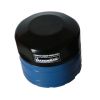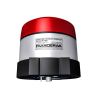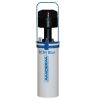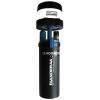Aanderaa DCS Blue Doppler Current Sensors
Features
- Includes integrated temperature sensor
- Configuration and data retrieval by use of Bluetooth or RS-232 cable
- Internal 1GB data storage (requires external power)
- Expedited repair and warranty service
- Lifetime technical support
- More
Overview
The Aanderaa 5430 DCS Blue is a rugged self-recording current meter with Bluetooth for communications and data retrieval. The DCS Blue is a stand-alone current sensor that also measures water temperature as standard. The sensor is powered by a cable from shore or via a battery connected to the sensor (not included).
Data Collection
The instrument configuration and data retrieval procedures are accomplished by means of Aanderaa’s Real Time Collector software. This package allows the user to establish a secure connection with the DCS Blue over the Bluetooth channel or via RS-232 cable with the purpose of configuration and retrieval of the data stored in the instrument.
Data Presentation
A basic version of Data Studio software is provided with the instrument and allows basic data quality control and plotting procedures, as well as reviewing the configuration of the instrument during the measurement session and exporting the collected data to various formats like Excel, Matlab, etc.
In The News
Wildfire Prevention in the Sierra Nevada Region with the Yuba Watershed Institute
Though recent wildfires have sparked new conversations about wildfire management and response, groups like the Yuba Watershed Institute have been monitoring the forests and water resources of the Sierra Nevada region for decades, managing approximately 5,000 acres of land with the Bureau of Land Management (BLM) and about 7,000 acres in private land partnerships. The goal of the Institute is to work with local communities and land agencies to improve watershed and forestry management through informed practices and public outreach. The goals of the Yuba Watershed Institute are three-fold: Improve the ability of fire suppression agencies like the California Department of Forestry and Fire Protection ( CAL FIRE ) and the US Forest Service.
Read MoreWave Sensors Integration with NexSens Buoys: A Cutting-Edge Solution for Wave Measurment
Real-time wave data supports accurate weather prediction, safe and efficient maritime operations, and provides valuable safety and operating condition information for recreation and commercial fishing. Understanding wave dynamics also helps with the design of protective coastal structures like seawalls, breakwaters, and jetties. It also supports better prediction of their impact on sediment transport and coastal geomorphology. Wave data is a key factor in qualifying and designing offshore wind farms and harnessing kinetic energy for electrical generation. It helps with the understanding of ocean-atmosphere interactions and contributes to studies of sea-level rise and climate change impacts.
Read MoreSpring 2025 Environmental Monitor Available Now
In the Spring 2025 edition of the Environmental Monitor, we highlight partnerships across the world and the importance of collaboration between government agencies, universities, environmental groups, local communities, and other stakeholders. From great white shark research in Cape Cod to monitoring fisheries in Lake Erie, this latest edition underscores partnerships that connect stakeholders in a watershed through environmental data. With an emphasis on data sharing, a combination of real-time and discrete sampling keeps the public and partners informed of environmental conditions. Our writers also sought out science professionals dedicated to working with peers within and outside of the environmental sector.
Read More













